#i feel like there has be some sort of venn diagram overlap of audiences
Text
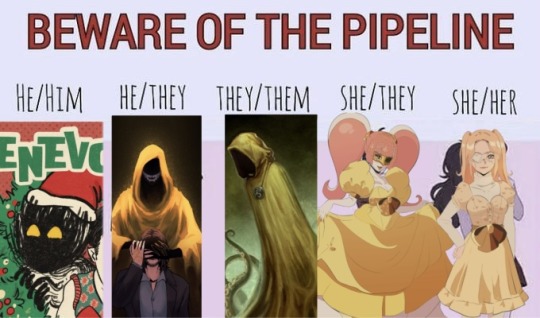
Does anyone else see the vision
#this has been rotting around in my head for multiple months now#it got the discord peer review so hopfully someone understands what im saying here#i feel like there has be some sort of venn diagram overlap of audiences#anyway enjoy#john doe#john doe malevolent#the entity#the entity malevolent#the king in yellow#the king in yellow malevolent#the king in yellow sucker for love#sucker for love estir#estir#sucker for love missy#sucker for love#sucker for love: first date#malevolent#malevolent podcast#also if its unclear the order is suposed to be john - the entity - the king - estir - missy
341 notes
·
View notes
Note
Hot take:
In the perfect game, a GM should never roll anything.
(please ask me to elaborate if you want to discuss this I swear I can explain my position if you don't already agree)
I half agree? I see where you’re coming from, though I disagree with your phrasing vehemently.
There’s no such thing as a perfect game, just perfect fits for a given person. Every game has a target audience, and no one game is gonna please everyone. Like the first step in designing a game is picking who it’s for because the venn diagram of RPG players is less a set of circles representing crunch vs narrative play and more an ever-modulating hypercube or some shit like that
I tend to make games for the target audience of Me. It just so happens that I have decent taste so other people wind up liking them too sometimes.
Now that i’m done yelling at you for that atrocious sin of RPG design hubris, I see where you’re coming from as far as dice go, from a player agency side of things: everything is in the hands of the players both literally and metaphorically.
As a GM i do really love rolling though. I fundamentally dislike being a player, and really only properly feel at home in the GM’s chair. But also i fucking love dice and rolling them.
My preference as far as game design goes is the ICON model: i like games split into crunchy(ish) tactical combat and more loose and free-flowing narrative play. (Ok note this isn’t a hard and fast rule by any means but I’m VERY unlikely to ever run a full narrative campaign. I gotta get my combat fix. It doesn’t have to clearly delineate between combat and narrative, there can be overlap that’s fine. But i do really like that separated style of game) I’m fully on board with the GM never rolling dice in narrative play. 100%. It’s not needed.
But I like combat. And not in a “this is a narrative scene that represents combat” way. I like the “roll initiative and put your mini on the map” sort of combat. And if the GM isn’t rolling in that, fuck that system to be honest. I’m not about to run that. I like my math rocks
32 notes
·
View notes
Text
2022 Reading Log pt. 15
Posted right before I get on a plane for the first time in 10+ years

70a. The Secret Life of Puppets by Victoria Nelson. Put down within 20 pages. The concept is decidedly interesting. The book’s thesis is that in modern Western society, the supernatural is more likely to be demonized than valorized, and that much supernatural feeling has been sublimated into the arts. This can be seen in attitudes towards anthropomorphic figures, including puppets, statues and robots. Unfortunately, the book’s writing style is incredibly pretentious and off-putting. The author is also a big believer in both Freud (beyond the references to the uncanny that the topic would naturally include) and Plato, both of whom are philosophers I hate. When I got to the end of the introduction, which warns that nobody who reads the book will be the same when they finish it, I rolled my eyes as hard as I could and stopped reading.
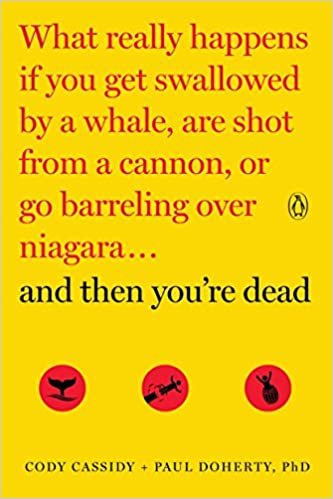
71. …and then you’re dead by Cody Cassidy and Paul Doherty, PhD. This book is much less pretentious, and a lot of fun. I liked it now, but I would have absolutely loved it when I was in high school, which is pretty much the target audience. The subject of the book is what exactly would happen to the body in a variety of hypothetical scenarios, and the biology, chemistry and physics behind, say, skydiving from the ISS, falling into a volcano or never falling asleep. Doherty is the senior staff scientist at the Exploratorium in San Francisco, which seems like the perfect training for writing a morbid educational book about various improbable ways to die. If you like popular science books like What If? and/or books about death like Will My Cat Eat My Eyeballs?, this is basically the perfect Venn diagram overlap of those.

72. Fighting Fantasy Monsters: Out of the Pit by Steve Jackson and Ian Livingstone, edited by Marc Gascoigne. Fighting Fantasy is a bit of retro gaming I had never had first hand experience with before. It started out as a series of Choose-Your-Own-Adventure style solo gamebooks, and then developed into a fairly simple RPG ruleset. The edition I read was the 2011 reprint for Advanced Fighting Fantasy, specifically, so there’s a little tiny bit more rules material than in the original. The monsters within are a mix of Tolkien and D&D knockoffs with more original content. A lot of them show their origins as CYOA critters—there’s a lot of unfair deathtrap, you must do exactly one type of action or you’ll die sort of mechanics on display here. There’s also some vintage racism—“headhunters” and “pygmies” are monsters here, and a lot of the writing for evil humanoid races like orcs and trolls have racialized tones. The reason I picked this up in the first place, and likely its greatest point of recommendation, is the art. Every monster gets a picture, all in black and white lineart and filled with grotesque detail. If you like 1st edition AD&D art, you’ll like the art in this book. The PDF conversion is a little sloppy; I think a text scanning program was used and not triple-checked, as “orcs” are referred to as “ores” about half of the time.
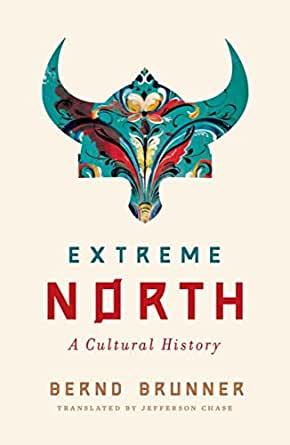
73. Extreme North: A Cultural History by Bernd Brunner, translated by Jefferson Chase. This was originally written in German. It talks about how the concept of the “North” has been an influence on mainstream Western thought—primarily Western Europe and the United States. The North in this case is primarily Scandinavia, Iceland and Greenland, but also discussions of Canada, Siberia and Alaska come into play. The core of the book is the development of a romanticized idea of the North as a bastion of civilization, an untamed wilderness, or a social paradise, and how that shaped everything from the Age of Exploration to Nazi Germany. There are a lot of fingers in the pie of how “Aryan” and “Nordic” became figures of racial supremacy—some of the historical figures I knew, like Wagner and Haeckel, and others I was surprised by their roles, like Kant and the Brothers Grimm. I also didn’t know that looking at Swedish social democracy with a wistful sigh is nothing new for American leftists—the earliest the book talks about is in the mid 1930s!

74. Beasties and Beasties 2 by Thomas Denmark. Yeah, I’m on something of a monster book kick. I’m lumping these two together because they have the same author, same publisher, and are very short. Each is around 90 pages, and only half of those have text. These are small zine-sized books of monsters and NPCs, with an illustration and a stat block for OD&D (or its legally distinct equivalent) on facing pages. Each has a few pages of backmatter with maps and world building—Beasties has an entry about the floating ziggurats of the Locust Gods, and Beasties 2 has an ecology article about goblin society and history. The monsters are all illustrated, but are illustrated with stock art, which limits their scope somewhat. Lots of humanoids, lots of undead. And lots of sexy ladies; the stock art chosen is often very thirsty for black and white line illustrations. Thinking back on it, none of the monsters really leap to mind, except for a somewhat awkward Trump parody (a babbling elephant-monster called a Drumpf) in Beasties 2, and the fact that a lot of the monsters in Beasties 1 have stench based abilities. These aren’t the worst OSR monster books I’ve read (if we count Lusus Naturae, that’s going to be a hard milestone to beat). But they’re not the best either.

75. Chasing Ghosts by Marc Hartzman. This is a weird one. It claims to be a book about ghosts for both skeptics and believers, but what that actually means in practice is that it’s a book by someone who clearly believes in ghosts that’s full of stories about hoaxes and frauds, followed by special pleading that some of the phenomena are real, or that the hoaxer was only hoaxing when they got caught for attention but the original haunting was absolutely real, you can trust me. The book is also intentionally incomplete about a number of the cases within it, like the Mumler Spirit Photographs, in order to make it seem like there’s more mystery than there actually is. The author basically confesses on the last page that he believes in ghosts because he’s afraid of death (the quote is “We become something new in the afterlife. Whatever form it takes, it sounds a lot like heaven. Dead in a box is hell.”). Basically the only thing I can wholeheartedly recommend about the book is the imagery. There are archival photos and newspaper clippings, supplemented with moody greyscale illustrations by Lauren O’Neill.
#reading log#ghosts#paranormal#monster book#osr#fighting fantasy#scandinavia#cultural history#white supremacy#puppets#uncanny valley#exploratorium
4 notes
·
View notes
Note
Saw your tags and now I gotta ask... What IS the difference between classic and method acting???
OKAY @mybrainproblems bestie you came to the right place!
So they're two different approaches to bringing a character to life, which is largely about connecting with your character's emotions. Method acting is your Daniel Day Lewis 'I never come out of character' approach - it's all about making the character's situation so real for you, the actor, that you genuinely feel everything your character is feeling in the moment. It's a scale, and different actors have different levels of how much they commit, but Daniel Day Lewis is a common example bc he genuinely lives as his character for the whole filming period - he refuses to stop using the accent, he stays in character, he lives in the conditions his character lived in, etc. It was invented by Strasberg in the first half of the 20th century and was super popular with american film stars like Marlon Brando - it's still used more wildly for screen than for stage, and tends to come up more in america, while classical acting is more british. (Method acting is also wildly more emotionally damaging for the actor to go about it this way bc it pulls you into all the difficult, traumatic places your character goes through, esp if it's something like Heath Ledger's Joker which requires the actor to go to some pretty dark places, and doesnt allow you the psychological break of keeping a clear line between you and your character.)
Classical acting, by contrast, is based in pulling memories and emotions from your own life and applying them to your character. You might think about your first date with your partner to find the emotion to play a scene that's a first date for your character. This is what Jensen was referencing at the beginning of that post - the Stanislavsky method of acting (the commenter talked about some more of the history of the method and sort of mixed up the terms whrn they talked about Stanislavsky and method acting, but generally they're right). You're still feeling the same emotion, or at least a similar/adjacent emotion, as your character, but you're pulling it from your own memories and applying it to the character. Creates the same effect for the audience, because no one can tell where you're getting the emotion from except you, but it requires less of an emotional toll. It can still be really tough, especially if you're drawing on something that was traumatic for you, but it's easier to separate from your character.
Jensen's approach to playing Dean and how he talks about his untrained style of acting in that one post is really interesting bc he's sort of bridging the gap between method and classical. As he said, he doesn't need to pull emotions from his own life nor actively recreate Dean's world to pull up all the genuine emotion Dean is feeling in any given moment. He just knows this character so well by now, and has lived him for so long, that he *knows* how he'd feel and respond, even if hes not always doing the thought process of 'okay he'd feel like this.' He doesnt have to work to get into character - he's not going around living like Dean all season while they're filming (except for the venn diagram bits where Jensen and Dean overlap lol) but he's also not having to pull from his own life to draw up and create Dean's emotions. A super clear example is how he talks about Dean's reaction to losing Cas - he wasnt thinking about what it would be like to watch someone he loves die, though he does feel the emotional connection to these people who he loves and knows how devastated he would be to, say, watch Misha die in front of him - but genuinely he just knew/felt how devastated Dean would be and could play that honestly. It's fascinating to watch him talk about his acting method bc this bridge between is actually the ideal for an actor imho. It's exactly where you hope to get to with your character, to know them so well. It makes total sense he's gotten there with Dean, both bc hes been bringing him to life for so long and bc he loves him so much, but also I'm so proud cuz hes such a good actor and I'm not sure he knows how genuinely good he is.
#bestie thank u for asking i love me an essay on acting#i hope this makes sense#lmk if it doesnt ill keep going#supernatural#jensen ackles#method acting#classical acting#asks#im just so proud of jensen hes such a good actor and i dont think he knows
14 notes
·
View notes
Text
Ranking : Spike Lee (1957 - present)

There have been countless directors whose careers have spanned my lifetime, but out of these countless masses, the one whom I can find the most in common ground with (as well as endless inspiration from) is Spike Lee. A New Yorker through and through, Lee went from a series of films that seamlessly blended hip-hop and old school Hollywood aesthetics, to personal films, to his take on the blockbuster, and currently, to the point where his canon has earned him artistic freedom and expression that many of his peers have not been able to achieve. He is the perfect bridge between the director-driven mindset of the 1970s and the cultural boundary-pushing films of the 1990s-forward. Not everything that he directed was a hit or a masterpiece, but this man has more iconic films under his belt that some directors have films to their name. That being said, it’s time to stir the pot and make an attempt at the monumental task that is ranking the films of Spike Lee.
I will only be including theatrically released feature films of Spike Lee that I have seen. His documentary work will be excluded, as well as his films I have missed or have yet to see. Here is a list of these films : Da 5 Bloods, Chi-Raq, Da Sweet Blood of Jesus, Joe’s Bed-Stuy Barbershop: We Cut Heads, 4 Little Girls, The Original Kings of Comedy, When the Levees Broke, A Huey P. Newton Story.
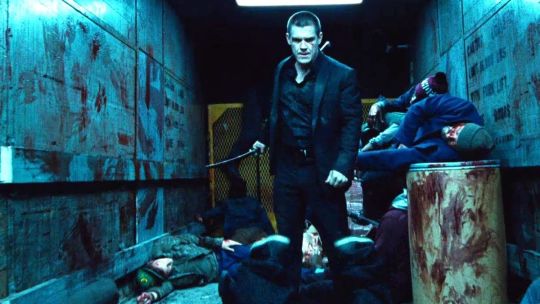
20. Oldboy (2013)
Every film that you make can’t be a winner. In the case of Lee’s attempt at remaking Oldboy, there were already two major strikes against it : a superior version of the film already existed, and that version was the middle film of a trilogy. I doubt that even a team of the most talented directors could have made a superior version of Oldboy that surpassed the original, but after 30 years of making films, it’s admirable that Lee would even attempt something so bold and seemingly insurmountable.

19. Red Hook Summer (2012)
When your film catalog covers three decades, there’s bound to be some overlap, be it stylistically or narratively. I’ve only seen Red Hook Summer once, but it was impossible for me to look at it subjectively, as it seemed to be a modern day mirror to another one of Lee’s explorations of New York adolescence. While this story is not a direct copy of a Spike Lee film that I will go into more detail on later, it does feel like the update equivalent that focuses on himself rather than the childhood of his sister. While an entertaining film from what I can remember, it sits behind a list of previous impressive achievements.
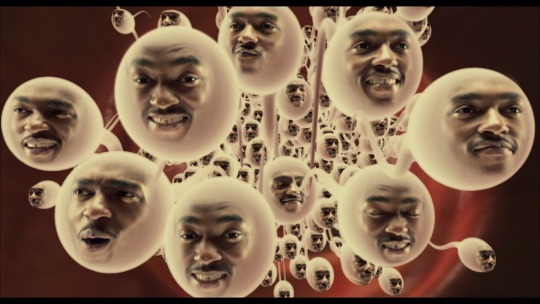
18. She Hate Me (2004)
Humor has been an element present in a number of Spike Lee films, but for my money’s worth, this film is the closest thing to an outright comedy that he ever made. Like a number of films on the back half of his career, he is touching upon important topics (sexuality and toxic masculinity, in this case), but these are topics that he has hit with more nuance and creativity in earlier films. This film did help transition Anthony Mackie into a leading man role, and he certainly took that opportunity and ran with it, so She Hate Me could be heralded for that alone. That being said, it was a great idea that slightly missed the mark, therefore placing it on the backend of the memorable films list for Lee.
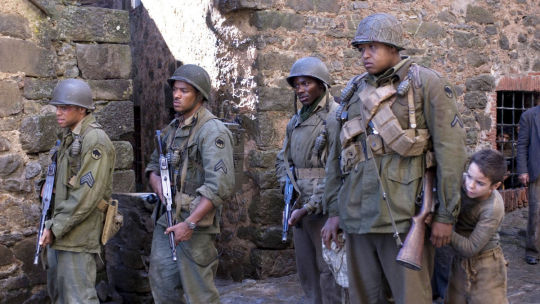
17. Miracle at St. Anna (2008)
This film had the potential to be a breakout resurgence for Spike Lee. He was coming hot off the heels of Inside Man, a perfect blend of Lee’s style and modern Hollywood fare, so having a period-piece war film seemed like a slam dunk. His cast was strong, while also being filled of relatively unknown young actors on the verge of becoming stars in their own right, but for whatever reason, this film failed to make a connection with the masses. While I do remember mostly enjoying my watch, I also remember feeling a bit underwhelmed by the ending, which in turn left me lacking a reason to revisit it. Maybe it’s a hidden gem that I haven’t seen enough times yet, but at this moment in time, its home is near the bottom of Lee’s impressive list of films.
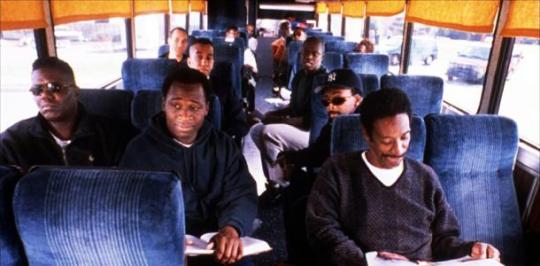
16. Get on the Bus (1996)
Many people’s eyes were opened to racial injustices during the COVID-19 pandemic, as several African-American men and women found themselves on the wrong end of violent acts from the police and other citizens in the midst of a ‘shelter-in-place’ era. Not only have these injustices been going on for my entire lifetime, but they’ve been a generational trauma for many African-Americans in the United States. When the Million Man March was announced in 1996, it was not surprising that Spike Lee took it as an opportunity to both document the march and build a narrative around it in which he could showcase a collection of actors he’d either featured in past films or would work with in future films. To my knowledge, this is one of maybe two or three films about the event, and it was certainly the film released in the closest proximity to it. For an independent, quick shoot, it definitely stands up, but in comparison to Lee’s other works that benefited from full crews and production schedules, it finds itself paling in comparison.

15. BlacKkKlansman (2018)
Despite the fact that this is the film that finally got Lee some sort of recognition at the Oscars, BlacKkKlansman was not quite the true return to form that many fans of Spike Lee expected. The film had moments of humor, compelling moments that directly focused on racial injustice and systematic oppression, and it pulled no punches while doing so. Like a handful of Lee’s other films, however, this one falls when compared to his other films that deal with similar subject matter. Adam Driver continued to show fans his expansive range, and Jasper Paakonen deserved INFINITELY more recognition than he got, but ultimately, this film checks all the ‘good’ boxes where it was expected to check the ‘great’ ones.
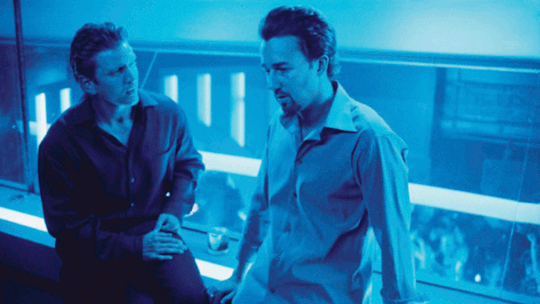
14. 25th Hour (2002)
As the year 2000 approached, Lee seemed to attempt and make a shift from films that specifically spoke on aspects of the African-American experience in favor of occasional films that reached a wider audience. While Summer of Sam would be considered the first foray into that realm, the true mark of this elevated sense of creative duty came in the form of 25th Hour. With the actors in tow, in tandem with the cinematography and skilled directing ability displayed in the film, one would expect a powerhouse movie, but ultimately, the expectations exceeded the narrative of this film. This one is entertaining, don’t get me wrong, but I personally did not find a connection with the story, meaning that the film was, at best, fun to watch.
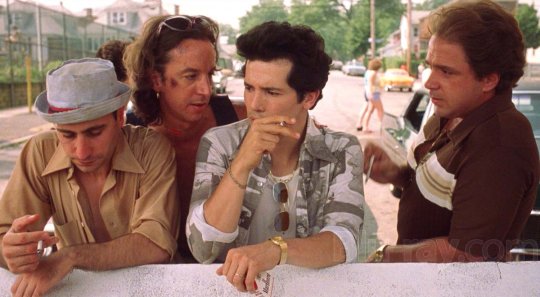
13. Summer of Sam (1999)
I’ve been a true-crime junkie since my early teenage years, and even the most casual of true-crime fans is more than likely familiar with David Berkowitz, also known to many as the Son of Sam. While Red Hook Summer did come out after Summer of Sam, it’d be hard to deny the fact that Summer of Sam is the last of Lee’s love letters to New York City. This was the film where Spike Lee stepped out of his comfort zone of the African-American experience, choosing instead to focus on more colloquial aspects of the American experience, and for my money’s worth, it was the start of an important shift for him. Despite being light on the Son of Sam action, the actors this film does focus on (and the story it chooses to tell) is a fresh look at a familiar era, and a crowning achievement that signaled new things for Spike Lee.
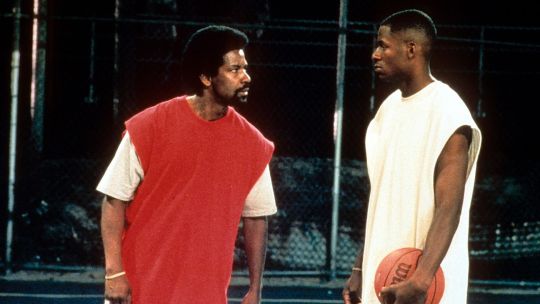
12. He Got Game (1998)
If you made a Venn diagram of people familiar with Spike Lee, the two biggest circles would be film fans and people who have seen at least one New York Knicks game since the 1990s. Therefore, the only thing that was really and truly surprising about He Got Game was the fact that it took Spike Lee 15 years and 11 films to make a film about basketball. On the outset, that’s exactly what it is : a film about basketball. Viewed with a wider lens, however, this story is a love letter to one of the most popular American inventions, and a story about how it can serve as a common-ground bridge for those from wholly different walks of life. The juxtaposition of Aaron Copland and Public Enemy made the soundtrack provocative, and Ray Allen stood out in his lead role, holding his own against the living legend that is Denzel Washington, who is always good for a stellar performance in a Spike Lee joint. Don’t mistake this film’s place on the list for my feelings about it... this is a stellar film, in my opinion, and one of my favorites to revisit.

11. Crooklyn (1994)
After making what many would argue to be the most important film of his career (which we will eventually get to), it’s no surprise that Spike Lee circled his creative wagons and made the focus of his next film inward. Crooklyn covers what seem like many personal bases for Spike Lee : he portrays the New York of the past vividly and beautifully, while spinning a true-to-life tale based on his personal experience, but opting to focus on his sister Joie Lee and his father Bill Lee. Of Lee’s many, many films, this was the one that I felt the most compelled to see at the time of release, it is one of the two I have the most vivid memories and recollections of, and it has a number of stylistic choices that keep me wonderfully perplexed to this day. Despite not cracking the top ten Spike Lee films, this one ranks high on the list of Spike Lee films that hit the bullseye of my heart.
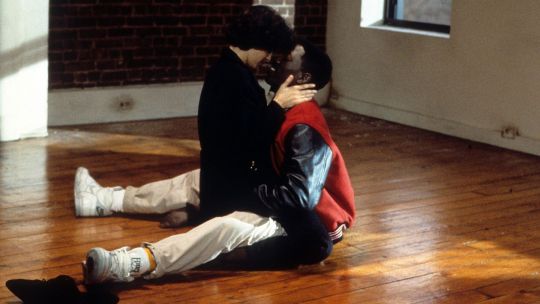
10. Jungle Fever (1991)
Interracial romance is one of those things that seemingly will always be a sensitive subject. I’ve heard many people say that Jungle Fever has a dated look on the subject, but I’d argue that the film was very forward thinking, especially in showing that an interracial romance is not the answer to the cultural and societal problems that life presents us. The movie also touches deeply on drug addiction without crossing over into the realm of being preachy or talking down to the viewer. It didn’t hurt that Stevie Wonder also managed to create a soundtrack’s worth of new material that instantly brought the seemingly controversial film directly into the public eye. Maybe it is dated... maybe it is uncomfortable... but what it is, undoubtedly, is an early masterpiece that fell near the end of one of the most stellar introductory runs that any filmmaker has presented us.

9. Clockers (1995)
Ever wonder what would happen if a Martin Scorsese film found its way into the hands of Spike Lee? Well, wonder no longer, because Clockers is out there waiting for you to discover it. The amount that this movie gets slept on is an outright tragedy and travesty. The soundtrack is KILLER, the color-timing puts the viewer in an immediate ‘cold-world’ environment, the order of operations presented in this film is brutal and unforgiving, and yet, it manages to be one of the most heartfelt films in the Spike Lee canon. EVERYONE presented in this movie brought their A-game to the table, from the Spike Lee regulars like Isaiah Washington, John Turturro and Harvey Keitel, to the glorified cameos and supporting roles, like Thomas Jefferson Byrd, Sticky Fingaz and Fredro of Onyx, and relative newcomer but promising leading man Makhi Phifer. This film is intense, but it is more than worth your time and attention.

8. Bamboozled (2000)
Bamboozled was shocking when it was released, to say the least. The true revelation, however, has been the way that relevance has seemingly caught up to the film... fake wokeness, modern day minstrel shows, low budget/high yield television and behind the scenes scandals have all come to light many years after this film had its initial run. While this film did not transition Savion Glover into the world of superstardom and crossover success, it certainly crystalized his immense talent and charisma in a way that his recordings of stage shows had previously been unable to capture. The imagery of America’s strange fascination with the dehumanization of African-Americans for generation after generation is rich, and every performance is compelling. This was definitely Spike Lee’s first masterpiece of the new millennium, and at the risk of being bittersweet, probably one of his last truly stunning achievements.

7. Girl 6 (1996)
Every ranking list has to have the controversial placement, so here’s mine... Girl 6 started as a lingering interest for me. The internet was just about to change the world, but we were still locked into landlines at the time, with cellular being a luxury, so the world of phone sex still had relevance. Upon seeing the film, however, I quickly realized that the phone sex exploration was playing counter to a Hollywood hopeful narrative that was brave enough to explore new ground (per the changing times) while being mindful enough to pay homage to the countless stories of Hollywood hopefuls that came before it. Many of the shifting cinematography looks that made Clockers so gritty were used to make Girl 6 feel dangerously euphoric. The list of cameos and brief supporting roles were not only a who’s who of cultural movers and shakers at the time, but it ran about as long as my arm. I recently revisited the film and expected it to be a bit more on the side of kitsch, but surprisingly, the times had not been as hard on the film as I anticipated. The film shifts quite well between light and dark, and even the ending that initially slightly annoyed me has found a strange sort of charm in my older, more life-experienced years. Add to this the hilarious running joke of Isaiah Washington being a kleptomaniac in nearly every scene he appears in, and there’s a realization that there are sublayers going on right in front of our eyes. This collaboration with Suzan-Lori Parks gives me hope that maybe one day, we’ll get a Spike Lee film adaptation of Topdog/Underdog, but we will see.
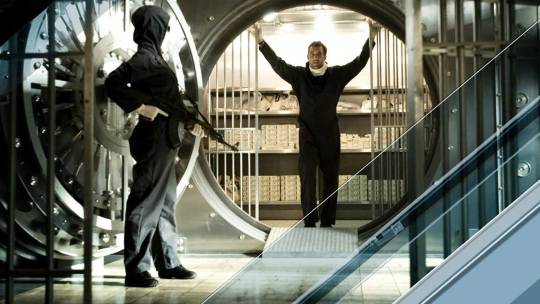
6. Inside Man (2006)
If you had to pick the most ‘Hollywood’ of the Spike Lee films, my money would be on this film ending up as the chosen one. By this rationale, it makes the film that much more impressive, as it also stands out as one of the most compelling, well-directed and well-acted Spike Lee films. At the time of its release, it was not only a return to form, but it seemed to signal an evolution. Spike Lee was able to use his signature, iconic shots that he was known for, like his camera-turned-to-dolly float, or the push-pull zooms, but he was also able to incorporate familiar Hollywood tropes, including the twist ending, and give them a breath of fresh air via an newly infused sense of style. Lee also stayed true to himself by educating as well as entertaining, bringing to light how atrocities from the past have more than historical connections to modern day benefactors. While I do think there are a handful of better ‘pure’ Spike Lee films, if I had to pick one movie for a curious party that my be skeptical, this would easily be my pick.
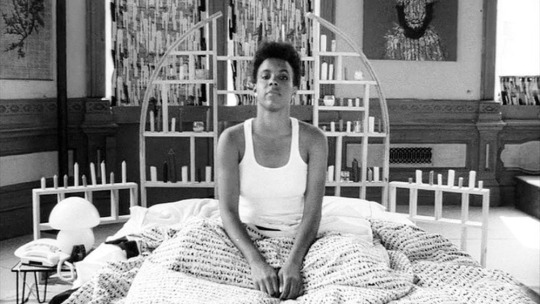
5. She's Gotta Have It (1986)
Oh, the joy of having your first film be a breakout success, but not to the point of pigeon-holing your career. She’s Gotta Have It was an important introductory step to the masses for Spike Lee : it showed his dedication to putting African-American performers into familiar narratives, it showed an appreciation for the voice of women on film that many first-time directors would likely not want to be the initial association to their style, it introduced the world to Mars Blackmon (who became a cultural icon), and it presented sense of style that switched on the viewer the moment before they could label it pretentious. Having characters address the camera made it feel like a play or a novel, but when the film shifted into movie mode, the camera moved with the energy and grace of a performance artist or dancer, which in turn fed into the character development and narrative it presented. As a bonus, the property found new life nearly 40 years later as a Netflix original series, introducing new generations to a modern day classic statement of feminism, and how it does not excuse bad behavior.
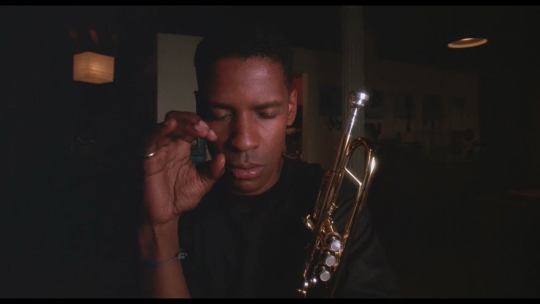
4. Mo' Better Blues (1990)
Those familiar with Spike Lee’s family know that he was raised by jazz bassist Bill Lee, who scored some of Spike’s early films. By this rationale, it comes as no surprise that Lee could make such a rich, nuanced and heartfelt film about jazz music that serves as an allegory for the hurdles that beset those driven purely by passion. The conversations about race, musical integrity and commercialism also work on both direct and symbolic levels, giving Mo’ Better Blues some of the highest repeat viewing value of any film in the Spike Lee canon. The film also marked the first collaboration of Spike Lee and Denzel Washington, a combination that yielded artistic, career, creative, commercial and critical success, led to a multitude of classic performances, and ultimately led to a generational collaborative changing of the guard in the form of John David Washington. The only negative I can give this film is that it did not lead to future films that explored genres of music like hip-hop and soul. While She’s Gotta Have It did focus heavily on relationships and intimacy, it could be argued that Mo’ Better Blues was Spike Lee’s first adult contemporary film, and his first look at modern romance in the more ‘traditional’ sense.

3. School Daze (1988)
The African-American college experience, specifically that of HBCUs (Historically Black College and Universitys), is one that has often been neglected in the annals of film history. As a graduate of Clark Atlanta University, it makes total sense that Spike Lee’s second commercial film would focus on that specifically overlooked culture, as it became a fitting vehicle for establishing Lee’s sense of duty and responsibility for education, sharing the African-American experience to the masses, and exposing systematic injustices and hypocrisies that kep the disadvantaged in a disadvantaged position. The real genius of this film, however, comes in the juxtaposition of presentations it jumps between... for the majority of the film, it is an unflinching look at the coming of age process that teenagers must traverse on their way to adulthood, including the hurdles of romance, forming your identity and expanding your view of the world around you. At key moments, however, the film switches into musical numbers, song performances and school dances that not only expand on the inner feelings, emotions and desires of characters, but heighten the reality of the story to a dizzying pace. In all the ways that She’s Gotta Have It put the world on notice that a unique voice was present in the industry, School Daze signaled the continuation of a run that would last another handful of films, and it firmly established Spike Lee as a generational talent.
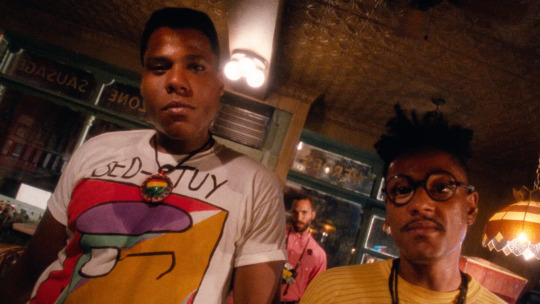
2. Do the Right Thing (1989)
I would guess that over the course of a career, a director secretly hopes that at least one of their works comes close to making an impact culturally. In the case of Spike Lee, however, we have a man who released two cultural-shifting films, and did so in a span of less than 5 years. They say the third time is a charm, and that’s exactly what Do the Right Thing was for Spike Lee. The vivid colors, stylistic earmarks, historical and cultural sense of urgency and focus on telling minority stories all expanded greatly with this film, which acted as both a parable of how past injustices can come back to haunt you, and a harbinger of how the reactions to these continued injustices would only amplify if not addressed. The fact that Spike Lee not only directed this film, but played the lead actor as well, is a monumental achievement, especially considering how few flaws the film has, if any. Several established actors played some of their most iconic roles in this film, and a breadth of newer, younger faces exploded onto the scene, almost all of whom either continued to work with Lee or found themselves evolving their careers in the wake of Do the Right Thing. The film is also directly responsible for perhaps the most iconic hip-hop song of all time, Public Enemy’s classic protest anthem Fight The Power. Any fan of film would be foolish to skip the Spike Lee catalog, but regardless of whether you’re interested in his work or not, this film is one of two he made that should flatly be considered required viewing across the board. The other one, being...

1. Malcolm X (1992)
For everything that Do the Right Thing did for Spike Lee and those involved in the production, the monumentally powerful biopic Malcolm X did all of that while also managing to humanize, canonize and create and icon out of a man that America tried its best to demonize. The masterful hand that Lee used to direct this film shows, as this film is the most ‘every frame a painting’ in his canon. Everything from the period costuming to the locations to the dance numbers to the cinematography absolutely leaps off of the screen. The editing is kinetic, the performances are full of life and depth, and the narrative does just enough going forwards and backwards to make proper connections without beating it over the head of the viewer. The respect shown to Malcolm X is massive, so much so that almost seemingly overnight, Malcolm X went from being a feared and often heavily criticized sign of aggressive blackness to a commercial commodity and household name, with the famous X suddenly adorning t-shirts, baseball caps and necklaces of all American youth, not just minorities. The impact of this film was so immediate that many schools held field trips for viewings, which further cemented the immediate and historical value of the film. Often, the connotation of saying someone ‘peaked’ for a film so early in their career would be negative, but the heights to which Malcolm X achieved on all fronts meant that even if the rest of Lee’s career was a steady decline (which it certainly wasn’t), he more than likely still would have ended up in a pantheon far above that of the average director.
With projects reportedly in the early stages of development, it doesn’t look like Spike Lee has any plans on stopping anytime soon. I certainly owe it to myself to see the handful of his films and documentaries that I’ve not seen yet... who knows, perhaps I may even go back one day and add the documentaries into the list, or find a surprise gem in one of his more recent movies I’ve yet to see.
#ChiefDoomsday#DOOMonFILM#SpikeLee#JoesBedStuyBarbershopWeCutHeads#ShesGottaHaveIt#SchoolDaze#DoTheRightThing#MoBetterBlues#JungleFever#MalcolmX#Crooklyn#Clockers#Girl6#GetOnTheBus#HeGotGame#SummerOfSam#Bamboozled#25thHour#SheHateMe#InsideMan#MiracleAtStAnna#RedHookSummer#Oldboy#DaSweetBloodofJesus#ChiRaq#Blackkklansman#Da5Bloods
17 notes
·
View notes
Text
Vaan (Reprise)
You know, this is a full-time Ivalice blog, but the reason I reblog Vaan defenses isn’t because he’s my favorite character, or however we’re phrasing that this week. I mean, I like the character, I think Vaan’s good, but that isn’t it. Vaan isn’t real and doesn’t need me to “protect” him.
The reason I’m always promoting defenses of the character of Vaan, and this is something I wrote about in that somewhat-oft-reblogged “defense” of FFXII, is that the contingent of people who are adamant about hating Vaan - the ones who will join a discussion about a literal separate topic to bring it up, or who can’t mention liking the unit in a spin-off game or a phone game without making it clear they hate him in his original game, is that hating Vaan is emblematic of a larger problem.
[And I don’t mean “not caring about him” or “he was fine I guess,” or “He’s okay at first but the second half of the story doesn’t give him as much to do” or “He’s Luke Skywalker dressed as Aladdin and I was hoping for something a little less easily-mapped to other very obvious pop culture references” or “the original release had those wonky abs that you all made a meme out of and they’re really distracting” or any number of legitimate criticisms - you know full well to what I refer...]
I’ve said some of these things before:
Vaan was made, at least in part, to appeal to women more than men, and certain men hate that
Vaan doesn’t provide the exact and very specific sort of power fantasy, power-through-agency, that these people demand from their RPGs, and video games are supposed to cater only to their specific demands
People have constructed an imagined, idealized FFXII that conforms to their desires and see Vaan’s somewhat-late addition as the blame for the game not meeting this illusion -- whatever game led by an adult male they imagine, assuredly sidelining Ashe in the process, would be the “serious, mature” Final Fantasy title that would let them feel superior about... something or other.
I’ve taken to calling these people “Delitawasrighters,” because they’re usually people who claim Matsuno’s games are better (they are) but then ignore Matsuno’s social conscience, his previous young protagonists, that even the “evil church” game didn’t decry faith, and any other number of inconvenient facts to fit a version of his games that they played at thirteen years old, somewhat abetted by a poor localization that didn’t help with subtleties.
[There’s a venn diagram of these people and certain other types of men on the internet with significant overlap, but I don’t think all of these guys are inherently in the other category, even if they’re impressionable in the same fashion - sometimes enough people repeat something that you just start thinking it’s the way things are.]
FFXII is far from perfect (and indeed, the same is true of Matsuno’s other games - I’m an unabashed fan, obviously, as I have this theme blog, but each of his works has their issues), but the “version we got, with Vaan” fits the Matsuno criteria - it has things to say about imperialism through Vaan the way that we see things about class through Ramza or nationalism through Denam, and yeah, even things about escapism through Marche. Typically the structure resembles a standard hero’s journey but has the climax in a weird place - Ramza’s arc climaxes when he opens the sluice gate despite all of the game remaining, and Vaan’s arc ends through Ashe at the Pharos, because he deliberately hands off his fate to her in Jahara.
People love to talk about FF games being good because of their stories, but it seems like only rarely do people actually seem to understand the stories. To take a game I’m much, much less fond of, for instance, FFVII’s impression upon the wider audience resembles the film Advent Children, with its brooding and flying around, but the game is the story of a scared young man covering up trauma, a frequently goofy dude who’s desperate for friendship. People heard about the FFVII remake and started asking how they’d handle Wall Market, which you can headcanon however you want but was put into the game as a series of offensive, gross jokes - but my first question was, “is Cloud going to ride a dolphin?” Because that’s the kind of thing that, rendered in HD, this sort of fan is going to absolutely hate, is inconsistent with their view of that game despite it, y’know, being IN the game.
Vaan isn’t and hasn’t ever been the problem. The problem lies in a particular skewed (& masculine) view of FFXII, and games as a whole.
24 notes
·
View notes
Text
What I think about Alison Roman
Any Gen-Z’er with a Twitter account has probably seen the latest Gen-Z Icon Controversy, i.e. the one involving Alison Roman. In case you’re not caught up on its details, the tl;dr is that The New Consumer (which appears to be a one-white-man show of an online publication steered by a former Vox and Business Insider employee named Dan Frommer) published an interview with Alison last Thursday — an interview where Alison, when asked about the difference between “consumption and pollution” (as if there even is a material difference), said:
“I think that’s why I really enjoy what I do. Because you’re making something, but it goes away.
Like the idea that when Marie Kondo decided to capitalize on her fame and make stuff that you can buy, that is completely antithetical to everything she’s ever taught you… I’m like, damn, bitch, you fucking just sold out immediately! Someone’s like ‘you should make stuff,’ and she’s like, ‘okay, slap my name on it, I don’t give a shit!’
....
Like, what Chrissy Teigen has done is so crazy to me. She had a successful cookbook. And then it was like: Boom, line at Target. Boom, now she has an Instagram page that has over a million followers where it’s just, like, people running a content farm for her. That horrifies me and it’s not something that I ever want to do. I don’t aspire to that. But like, who’s laughing now? Because she’s making a ton of fucking money.”
This is the quote that most people who’ve followed this drama have latched onto, and I’ll come back to discussing it in a moment. I’m really not sure why the interview was published at all, other than for a publicity or financial boost during these times, because I don’t think anything worth hearing was uttered by either the interviewer or interviewee. Moments in the interview seemed either tone-deaf or trivial to the point where I wondered why they were included at all. Early on, for example, Alison laments that she hasn’t been making enough money during this pandemic. (She does not live in want of money.) Later she half-jokingly complains that her public persona has been reduced to “anchovy girl”, ostensibly because she often uses them in her cooking. (She does, and often proudly owns that fact, which makes this complaint pretty uninteresting.) But the point of this interview was meant to be, I think, a rumination on how Alison would turn her belief that she “isn’t like the other girls” into practice.
It’s a common thing to desire, I think — this ingenuity balanced with relatability, and I think seeking this balance is what propels so many people my age. Few things are more embarrassing to us than unoriginality, than being a carbon copy of someone else, yet few things are scarier than social rejection. We don’t want to like the same things as everybody else, but we want at least some people to like the things that we like. I think it’s what drives certain subcultures to exist in the first place, the way that subsections of people can congregate around something or someone, reveling in each other’s presence but also in knowing that they are, in fact, just a subsection of the greater population.
This mentality is, admittedly, sort of what drove me to like Alison Roman in the first place. For background: the first time I cooked a recipe of hers happened unwittingly; in December 2018, I saw the recipe for the salted chocolate chip shortbread cookies that became known as #TheCookies (Alison’s virality can be encapsulated by the fact that all of her most famous recipes have been hashtagged, e.g., #TheStew, #TheStew2, #ShallotPasta or #ThePasta), but I made them without knowing that Alison was the person behind the recipe. The cookies were good (though I think any recipe with over two sticks of butter and a pound of dark chocolate is bound to be good.) At some point about a year later, I watched a YouTube video published by NYT Cooking where she made her white bean-harissa-kale stew, and I thought she was funny and really pretty and, like me (I think), had a fastidious yet chaotic energy that I always thought made me awkward but made her seem endearing. Alison’s recipes taste good, they come together really easily, and you don’t need special equipment or a lot of kitchen space to execute them. It’s why I’ve committed at least three of them to memory, just by virtue of making them so often. I liked her recipes so much that, for over three months, one of my Instagram handles was inspired by one. But I also liked her, or wanted to be like her, or some combination fo both. I’d be lying if I said I didn’t want to be her friend, or that I didn’t aspire to her lifestyle of Rachel Comey clothes, glistening brass hoop earrings that cost 1/4 of my rent, regular trips to downtown Brooklyn or Park Slope farmers’ markets or small butcher shops where the purveyors all knew her name, an always-perfect red gel manicure, the capacity to eat and drink luxuriously and seemingly endlessly and to have the money for a yoga studio membership to help her stay slim anyways.
Of course all of those things are signifiers of social class more than anything else. But in oligarchical, consumerist societies, what is expensive and what is good become two overlapped Venn diagram circles, and I have not yet reached a level of enlightenment to be able to fully tease the two apart. And while I would never drop $425 on a jumpsuit, no matter how pretty I think it is, I could crisp up some chickpeas, stir in vegetable stock and coconut milk, and wilt in some greens, and act like my shit was together. I liked Alison because when I first started liking her, she hadn’t yet risen to the astronomical level of digital fame that she enjoys now, and by making her recipes, some part of me believed that I would be inducted into a small group of her fans who, by serving up her dishes, telegraphed good taste.
This idea of “good taste” is a complicated and racially charged one. Alison is white; she lives in one of the whitest neighborhoods in Brooklyn (maybe even all of New York City); her recipes cater to a decidedly young, white audience. I think another reason why her dishes hold so much Gen-Z appeal, beyond their simplicity and deliciousness, is because they sit at the perfect intersection of healthy-but-not-too-healthy and international-but-not-too-international. Her chickpea stew, for example, borrows from South and Southeast Asian cooking flavors, but you wouldn’t need to step foot into an ethnic grocery store or, god forbid, leave Trader Joe’s, to get the ingredients for it. The shallot pasta recipe calls for an entire tin of anchovies, and you get to feel cool and edgy putting a somewhat polarizing food into a sauce that white people will still, ultimately, visually register as “tomato sauce and pasta” and digest easily. All of the recipes in her cookbook, Nothing Fancy (which I received as a gift!), are like this. She doesn’t push the envelope into more foreign territory, probably because she doesn’t have the culinary experience for it (which is totally fine — I never expected her to be an expert in anything except white people food), and probably also because if she did push the envelope any further, her book, with its tie-dyed pages and saturated, pop-art aerial shots, wouldn’t have been as marketable.
That’s what’s unfortunate — that white people and white-domineered food publications have been the arbiters of culinary taste in the U.S. for centuries. I’m thinking about Julia Child, about bananas foster being flambéed tableside and served under a silver domed dish cover, about the omnipresent red-and-white-checked Better Homes & Gardens cookbook, about Guy Fieri and Eric Ripert and Ina Garten and the Bon Appétit Test Kitchen. I’m thinking about how white women have long been the societally accepted public face of domestic labor when it was often Black women who actually did that labor. It’s Mother’s Day today, and I’m thinking about how, in middle school, I’d sometimes conceal my packed lunch of my favorite dishes my mom made — glass noodles stir-fried with bok choy, cloud ear mushrooms, carrots, and thinly sliced and marinated pork; fish braised in a chili-spiced broth — so that my white friends wouldn’t be grossed out, and so that I wouldn’t have to do the labor of explaining what my food was.
And I’m thinking of that now-notorious Alison Roman quote. To be fair, Marie Kondo and Chrissy Teigen do have large consumer and media empires, which have become profitable and which require huge teams of people to sustain. Both of them probably do have large amounts of money at their disposals. What’s weird to me is that Alison accuses both Marie and Chrissy of “selling out” because they each branded their own lines of purchasable home goods, yet Alison herself said in that very same interview that she had also done that very thing. It’s just that Chrissy’s line is sold at Target, while Alison’s, according to her, is a “capsule collection. It’s limited edition, a few tools that I designed that are based on tools that I use that aren’t in production anywhere — vintage spoons and very specific things that are one-offs that I found at antique markets that they have made for me.” I suppose it’s not “selling out” if it caters to the pétite bourgeoisie. I don’t know if Alison is explicitly racist, since I don’t know if she called out two women of color simply because they are women of color, or if she genuinely just so happened to select two of them. But that she feels like she has the license to define things as “selling out” based on who the “selling-out” behavior caters to reeks of white entitlement.
There’s also an air of superiority with which she describes how she would market her product line:
That would have to be done in such a specific way under very intense standards. And I would not ever want to put anything out into the world that I wouldn’t be so excited to use myself.
She says this right before talking about Marie Kondo and Chrissy Teigen, accusing them of being lackadaisical and unthoughtful (”okay, slap my name on it! I don’t give a shit!”; “people running a content farm for her”) when she likely has no idea what the inner workings of either of their business models are. To be sure, it could very well be true that Marie and Chrissy have handed off these aspects of their brands to other people. But for Alison to assume that they have, and that her own business management style would, by default, be better because she would retain control, is egotistical.
Alison ends the interview by proclaiming that her ultimate goal is to be different from her contemporaries. She says,
To me, the only way that I can continue to differentiate myself from the pod of people that write recipes, or cookbooks or whatever, is by doing a different thing. And so I have to figure out what that is. And I think that I haven’t ultimately nailed that. And I’m in the process of figuring it out right now.
I expect that her path to “differentiation” will contain riffs on the same iterations of preserved lemons, anchovies, canned beans, and fresh herbs that she’s always relied on. I expect people will still think she’s cool, because that’s easy to achieve when her recipes and aesthetic are a series of easy-to-swallow-pills, when she tells the cameraman not to cut the footage of her accidentally over-baking her galette, and when being a white creative and working among mostly white colleagues means that she’ll get a lot of latitude. I expect she’ll continue to sell out, which is completely fine, so long as she’ll be candid with herself and actually call it selling out.
And I want to learn recipes from a chef who looks like me, and I want that chef to be “marketable” enough to achieve Alison’s level of fame. I want people of color to get to decide what recipes deserve their own hashtag. I want Alison Roman to be emotionally okay, because Twitter backlash can be vicious. And I kinda want to buy Marie Kondo’s drawer organizers now.
0 notes
Text
Ye Olde Flint ‘n Finale Interview Round-Up.
Finale interview round-up post. Whilst there does seem to be some intenional thematic ambiguity to the final Flint/Silver scene, the showrunners also seem to have continually placed an emphasis with specifically bringing Flint to Savannah to set up his Treasure Island fate. Since Thomas’ return is linked to Flint’s fate, I’ve left in quotes regarding him, too. Choice quotes before the cut, and more excerpts/article links underneath the cut.
EW:
Did you always know you were going to have the Flint-Thomas reunion? Or did that happen organically?
Yeah, something like it. I think there was a deliberate choice in season 2 not to show the body which, if I’m an audience member watching a show, I’m always at best suspect and I assume they’re not dead [if there’s no body], no matter how many people tell me otherwise. So we had a vague sense that that was a thing that was going to come back in some shape or another. I think it was sometime during season 3 when this version of it started to materialize and to have an ending that would marry us to the book [Treasure Island]. At the end of the book, it’s recounted by other people that Captain Flint died in Savannah alone, which begs a lot of questions: How did he get there? What was there that was worth retiring from his career? It seemed like that was starting to tick off a lot of boxes, in terms of how to make the transition from show to book make sense.
Lauren Sarner/Inverse:
LS: In your words, what is Flint’s fate?
Jonathan Steinberg: The crew’s understanding of Flint’s fate in Treasure Island is that he dies alone in Savannah in an emotionally not good place. How did he get there? We like the idea of a story about how he was put there as an act of mercy. It turns into loneliness later on, presumably when Thomas dies of old age. That made sense as a way to both acknowledge the book and spin it. To take something that seems like a neutral piece of story about where Flint ends up to be an artifact of this emotionally fraught moment between Flint and Silver. Silver is facing the choice of having to kill him or not. There’s this choice made to create a different story.
LS: But is the story true? After the camera cuts away from Flint and Silver, the men see birds fly up from that area as if Silver does shoot that gun.
Steinberg: There’s a lot of things they could have been reacting to. It was deliberate to have there be no sound to allow for interpretation.
Robert Levine: There’s a choice on Madi’s part about what Silver’s telling her. We wanted to put the audience in the same place of having to make a choice about believing Silver or not.
Do you believe him?
Steinberg: Do we have a sense of what we imagine is happening? Yes, but if I was someone else, I wouldn’t want to watch it with my interpretation coloring it.
TV Insider: Was there really a place in the colonies that rich Brits sent their wayward, i.e. gay, children?
Levine: The founder of the Savannah colony was a reformer who wanted the colony to reshape how the world treated those deemed as dangerous or different. That was a basket we could put Thomas in, and then we had the thread to use for Silver to end Flint’s war without necessarily ending Flint. It also helped Flint find his way back to McGraw [the compassionate man he was before his vengeful turn into Flint.] It’s bittersweet; there’s tragedy in it but renewal as well.
DEADLINE: One of those themes was the one of love and redemption, especially for Toby Stephens’ Flint. After what looked for sure to be his death at the hands of Silver, we see him transported to a reformist penal colony in what is now the state of Georgia and reunited with a kiss and an embrace with Tom Hamilton. Why was that the end for Black Sails’ most dominating character?
STEINBERG: Among the things that we felt from Treasure Island we wanted to respect the cannon and work the show towards was this very specific and very odd mention of the end of Captain Flint, which is only told through hearsay in the book. It explained to be that Flint died alone and in a really rough way in Savannah, and it did feel specific and something that we wanted to try to make some sense of and give some emotional context to.
I also think the idea that we would hear from Thomas again has been around for as long as Thomas has been around. I think we largely subscribe to the idea that if you don’t see a body in a show, it doesn’t matter how many people tell you they’re dead, they’re not dead, and it was just a question of how and when he would return.
DEADLINE: You really mix history and Stevenson’s fiction there…
STEINBERG: Well, there was this historical reality that felt interesting, that Savannah and the Georgia colony began, in some part, as a prison reform exercise. It was a way to create an environment in which prisoners were treated more humanely than they were in England. So, when you add those two things up, the overlap in that Venn diagram starts to look at lot like Thomas Hamilton, and it just felt clean. Especially in a show that has always been about balancing history and this fictional world from Treasure Island that, at the end, they were touching again. That there was a moment in which it felt like both halves of the show had their moment to have a part in Flint’s end and to have a part in sort of putting him in the place that he’d stay until the book starts.
Collider: Do you think that Silver would have eventually come to the same conclusion about what he was going to do with Flint, or was his decision influenced by constantly having people in his ear about it?
STEINBERG: I don’t think it’s a choice he would have made, 10 episodes ago. It feels like it’s a choice that was made only because of the two massively formative relationships that have developed and become that way, in Season 4. A lot of the people who were in his ear were largely manifestations of the voices that he was already hearing in his own head, giving him that internal conflict, whether it’s Billy or Hands or Madi, or whomever. It just felt right, as a way to finish telling his story, that his story ends with him conceiving of this act of mercy. It felt like a way to spin the way you find these characters in Treasure Island, in a way that felt interesting and a little unexpected.
Collider:
How did you come to decide that this is what Flint’s fate would be, and that we would be left questioning whether or not that’s really the truth?
STEINBERG: When you read the book, you’re told that Flint died in a very specific way, and it’s a way that doesn’t immediately suggest story. He died alone, some indeterminate period of time after the exciting stuff happened, and he died in a very lonely, sad place. When we talked about planting flags in the ground of things that we considered to be canon, and you have to account for them, that was one of them. It felt like it was important, and it felt like a challenge to figure out how we could acknowledge that and also make it work for us, and recontextualize it and make it a bit of a mystery. There’s a lot of people telling a lot of stories in Treasure Island, and a lot of people telling stories in this show. If this show is about anything, it’s about the fact that narrative can be a very powerful thing, when used properly. So, it felt right that the ending was steeped in that idea.
Deadline:
DEADLINE: Having started Black Sails 20-years before Treasure Island is supposed to start, you brought the series finale right to the brink of the book, was that always the intended ending of the show?
LEVINE: You know, our goal with the ending was to get as close as possible to Treasure Island. It was to try to leave you in a place where you could finish the show and then start at page one of the book, and start reading it, and have it not only make sense in the narrative sense, but also be something of a new story for you. Because now you could fill in a lot between the lines in terms of the characters, and their relationships, and their histories.
I think, in some cases, we wanted it to feel like even if our story was ending properly for the sake of Treasure Island, that for some of them, life goes on.
IGN:
IGN: I was surprised that everyone made it out of the series finale alive and, for the most part, with happy endings. What was behind the choice to not load up on the death on your way out?
Jonathan Steinberg: I think there was an awareness that when watched in a certain way there was so much tragedy already in the ending. Of all the people who were lost and weren't there anymore, and how close they were to something historically meaningfully that got bargained away, that to then pile that on with even more misery just felt unpleasant. And not true. I think the show's always been a tragedy but I don't think there's ever been a feeling of wanting to wallow in it. And so I think some balance in that sense felt right. And only some of it was really our choice. By the time you get to that point in a story, the characters are talking to you a little bit about where they belong. I think the endings all felt like everyone was where they belonged. We had some say in it, but a lot of it was just letting it all be what it wanted to be at that point.
IGN: Over the course of the show, were you always determined to drive everyone up to the doorstep of Treasure Island? Was it the case where if you'd read the book then fine or did you always have the goal of leading us into the novel in specific ways?
Levine: I think the latter for sure. That was always the intent. In practice, it wasn't an easy thing to do. The book, when you really start to get granular with it, there are some things that are easily understood and some things that aren't. Obviously, he was just writing his own story and now here we are trying to graft ours onto it. It was certainly the topic of a lot of conversations and a lot of planning, trying to get our ending to a place where it could be as close as possible to the ideal. Which is that you've watched the show and then you pick up the book and can seamlessly continue with the story while also feeling different because you know all these motivations and backstory from our show. It now informs everything there. It was just a matter of grinding it as close as possible as we could get it to be while also making sure we were delivering a satisfying ending for the characters of the show. I feel very happy where we got. We have Billy Bones in a place where it sort of makes sense that he ends up where he ends up in the book. And Silver and Flint. Madi too, I think you can understand her to be the person that's referenced in the book in a way that makes sense. I feel like it's good. I give us a B+. [laughs]
IGN: Flint found Thomas, after all these years, but he's also a prisoner now. But is being back with his true love worth it? Is that all that matters to him?
Steinberg: I think we spent a lot of time this season exploring that question. Is it enough if you are forced to give up everything but you are given the connection you've been seeking in order to be fulfilled - is that connection enough? I think, in some way, that question is explored a number of times in the last few episodes and we get different answers. And I don't necessarily think that at the end of that finale those answers are fully cooked. I think they're situations that people have chosen for themselves or have been chosen for them, in which they're going to find out. In that moment, it's emotionally effective I think. To see them back together again. And to see Flint in that place.
Hollywood Reporter:
HR: How beholden were you to the fates of all the characters in Treasure Island?
It depends on which one, it depends on the details. We tried to have a fair amount of discipline about certain elements of that book and treat them as canon and things we just had to find a way to make sense of. There are some other elements that I think are relayed through unreliable narrators in the book or seemed, to us, to be part of a narrative that was clearly embellished from some history that came before it. Part of the process of trying to land this story into that book was about sorting out the two and figuring out what really is canon. What's Long John Silver's story? It's not necessarily something to be taken at face value. But it was a challenge. That book doesn't contemplate 40 hours of story that come before it.
HR: Did you always know you were going to reunite Flint with Thomas at the end, or did that idea come about later in the writing process?
We had a sense in season two when he died off screen, that any character who dies off screen, you're taking the word of the messenger as to whether or not it actually happened. As someone who watches these stories and reads these stories, it feels unlikely that it actually happened. We knew we weren't finished with him. And then at some point in season three we realized it would be reasonably late in the series when he came back, so in season four it felt right. And it wasn't a choice he would make, it was a choice made for him.
TV Insider:
TV Insider: The series ended with several characters, including Silver and Flint, sacrificing their revolutionary dreams to be with their true loves. Are you saying that love tops every other purpose—whether fighting for freedom or revenge?
Steinberg: Since Season 2, at a basic level, the story has been about the tension between a domestic life and comfort and the desire for meaning and glory and change on a massive scale. A number of the endings are about that choice made by these characters. Or the choice made for them.
TV Insider: Like Silver made for Flint. Why did you decide to reunite Flint and his presumed long dead lover Thomas Hamilton (Rupert Penry-Jones) on a Savannah prison farm? What do you expect fan reaction to be?
Levine: I think fans want Flint to find some measure of peace in this world. The fate of Thomas was always a bullet left in the gun from the time we left his actual death offscreen. The question was when and what would be the most effective way to deploy that plausibly and meaningfully.
(There is some really beautiful Silver and Flint discussion across all the finale interviews, and how their relationship can be read, and it’s all very much worth a read. This post was a bit too long already, so I sadly left the excerpts out.)
24 notes
·
View notes
Link
In the nomination race, the senators from Massachusetts and Vermont are dominant. Many expect both to pass Joe BidenBernie Sanders and Elizabeth Warren hug after participating in the second Democratic primary debate in Detroit, Michigan. Photograph: Brendan Smialowski/AFP/Getty ImagesAmong the what ifs and what might have beens of politics in America there is Ready for Warren, a group that urged Elizabeth Warren to run for president in 2016.“If I’m being quite frank, I’m upset that she didn’t and haven’t really forgiven her,” said Dave Handy, a political organiser who was part of that effort. “We could have avoided a lot of trouble if she had just had the courage to run.”Handy threw in his lot with Bernie Sanders instead. “Even though progressives like myself begged her, Liz refused to run and this whole apparatus that Bernie now has – that I’m a part of and many progressives and now many democratic socialists are a part of – could have been hers. And we could have avoided the whole ‘Bernie bro’ myth that’s been carved out.”Activists such as Handy illustrate divided loyalties and an exquisite dilemma for progressives as Democrats choose their nominee to take on Donald Trump in 2020. Polls show Sanders and Warren running almost neck and neck behind the centrist Joe Biden, begging the question: to avoid splitting the vote, should one drop out and endorse the other?With both candidates drawing bigger crowds than a former vice-president who seems increasingly gaffe-prone and vulnerable, there is no sign of it happening any time soon. Indeed, some on the left believe Sanders and Warren are poised to push Biden into third and go head to head.> Warren and Bernie have been dominating the debate; I feel like the Biden campaign is very much on the defensive> > Charles ChamberlainCenk Uygur, host and founder of the online news show The Young Turks, wrote in the Washington Post this week: “While Warren and Sanders draw thousands, his audiences are far smaller. His campaign is gasping for breath, and we’re only in August. The Biden fade has begun. I’m not sure he will even be in the race by Iowa.”Uygur added: “This race now isn’t between Warren and Biden; it’s between Warren and Sanders. And for progressives, that’s a dream come true.” ‘Elizabeth Warren Is Completely Serious’Sanders, a senator from Vermont who at 77 is the oldest candidate in the field, no longer has the element of surprise he enjoyed against Hillary Clinton in 2016. He continues to promise free tuition at public universities, a $15-an-hour minimum wage and universal healthcare. He still has a peerless network of small-dollar donors and continues to generate enthusiasm at rallies.Warren, a 70-year-old senator from Massachusetts and longtime critic of Wall Street, has enjoyed a slow but inexorable surge. She has promised to “fight” – one of her favourite words – a rigged system and has released detailed policy proposals on everything from breaking up tech companies to implementing a “wealth tax” on the rich.Her populist economic message has struck a chord, drawing big crowds – 15,000 in Seattle; 12,000 in St Paul, Minnesota – and positive media buzz. “The Very Real Possibility of President Elizabeth Warren” was Rolling Stone’s headline; “Slowly and Persistently, Elizabeth Warren Is On the Rise” declared New York magazine; “Elizabeth Warren Is Completely Serious” trumpeted a profile in the New York Times.Charles Chamberlain, chair of the progressive group Democracy for America, said: “She’s the big winner of the last eight months. We’ve seen her steadily climb among our members. It’s a well run, well executed campaign, clearly engaging with voters. But Bernie Sanders has also been campaigning hard – it’s been ‘steady as she goes’.“Warren and Bernie have been dominating the debate; I feel like the Biden campaign is very much on the defensive when it comes to policy. The rallies for Biden are eerily reminiscent of the lacklustre campaign of Hillary Clinton. Warren and Bernie are going to event after event and just getting bigger.”Joe Biden listens to a question from a representative of Moms Demand Action, a pro-gun control group, in South Carolina. Photograph: Sean Rayford/Getty ImagesChamberlain shares the view that Biden will fade.“I think this is going to come down to a Democratic primary with Warren and Bernie at the top,” he said. “Neither should drop out. They need to fight this to the end, even if that means going to a convention where deals have to be made.”Who would win such a fight remains a matter of conjecture. Sanders won his first national union endorsement this week from the 35,000-member United Electrical, Radio and Machine Workers of America. But most unions remain on the fence.Liberal groups are also split. In June Warren led a MoveOn survey with the support of 38% of members, followed by Sanders with 17%. In July, Sanders topped a Democracy for America poll with 32%, followed by Warren on 26%. In both cases, Warren had gained ground.Indeed, she has gathered momentum nationally, overcoming controversy about her dubious claims of Native American ancestry, while Sanders has arguably hit a ceiling. There is a perception, at least, that she is gaining at his expense.Michael Steele, a former Republican National Committee chair now a political analyst for the MSNBC network, said: “You’ve seen, in the rise of Elizabeth Warren, the Bernie Sanders voter falling off of Bernie, finding a better, younger fort to to dock their ship to, if you will. They don’t think that they are losing a step with Elizabeth; in fact, they are probably gaining a few more steps because she checked a number of other boxes for them – in terms of being a woman, for example.> If both campaigns feel that they have traction, you won’t have an incentive there for either one of them to drop out> > John Zogby“We’ve seen that in the numbers, how she’s eclipsed him and now passed him in the polling, where in some polls she’s a lot closer to Joe Biden than Bernie was in the past.”This week Senator Kirsten Gillibrand of New York became the sixth Democrat to drop out of the race since July. Steele does not expect Sanders or Warren to throw in the towel any time soon.“If both campaigns feel that they have traction and they’re polling relatively close to each other, you won’t have an incentive there for either one of them to drop out. They’re both raising money, they’re both organising on the ground.“I think they’re going to be fairly competitive with each other until one separates clearly from the other. That has not happened yet. If I’m Elizabeth Warren, I’m not going to cede that ground to Bernie Sanders, and if I’m Bernie Sanders I’m certainly not going to cede ground to her that I established going back to 2016.” ‘Bearer of the torch’Imagined as a Venn diagram, there is common ground between Warren and Sanders voters but each has their own distinct base. A survey by the Pew Research Center this month found that about seven in 10 of Warren’s supporters are white, compared to about half of Sanders’ backers. Warren’s supporters are substantially more likely to have a college degree compared with supporters of Biden and Sanders.John Zogby, a pollster and author, said: “Because of progressive ideology there is some sort of overlap, but they are different. Warren picks up support among women that ordinarily Sanders would not get, including former Clinton supporters who regard her as the bearer of the torch to get a woman elected.“To assume that if one drops out, he or she would back the other is too facile. If Warren dropped out, she would probably consider that she had some leverage in the mainstream of the party and a chance to run again in the future, so would most likely endorse a mainstream figure like Biden.”The senators have differences in style and substance. Warren embraces the term “capitalist” and is seen by some as less disruptive to corporate interests; Sanders characterises himself as a “democratic socialist” and offers fewer policy specifics. Warren refused to appear on Fox News; Sanders held a town hall on the network. Warren has just taken her 50,000th campaign selfie with supporters who wait in long lines; Sanders retains a curmudgeonly persona and showed little appetite for small talk at the recent Iowa state fair.But when the duo, who remain fast friends, appeared together in the second debate in Detroit, distinctions appeared insignificant as they joined forces to fend off centrists on their support of policies such as Medicare for All, which would extend the existing government-run health insurance programme to all Americans, largely eliminating a role for private insurance.In the end, however, even if the progressive dream comes true, there is bound to be disappointment and compromise for someone. Handy, 31, the former Ready for Warren activist, said: “In terms of the entire political spectrum, I would much prefer a Warren administration to a [Kamala] Harris administration or a second term of Trump. But that said, it just won’t go far enough.“What this country needs now more than ever is what we had post-world war two with the building of the American middle class and FDR’s incredible social reform. That is what a Sanders administration will do, and my fear is that a Warren administration will not go far enough in addressing income inequality, in addressing criminal justice reform, in addressing our climate, in addressing all of these problems.”
from Yahoo News - Latest News & Headlines https://ift.tt/2UrRnQM
0 notes